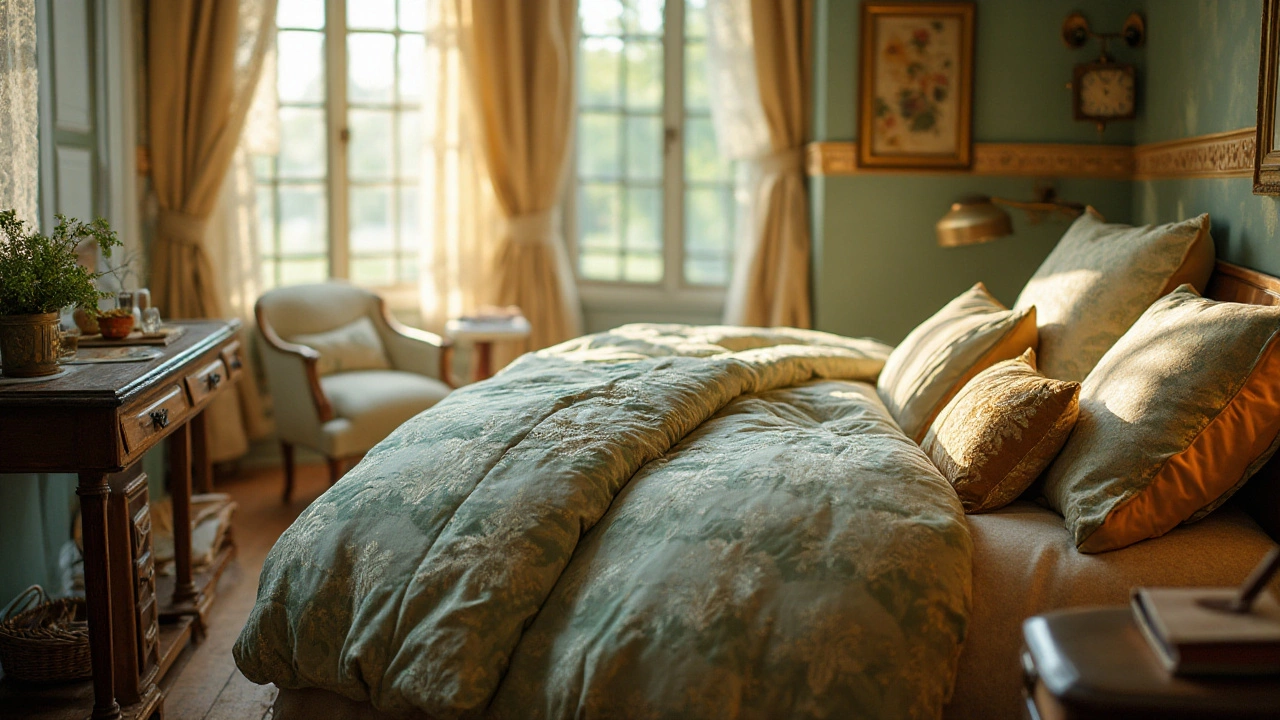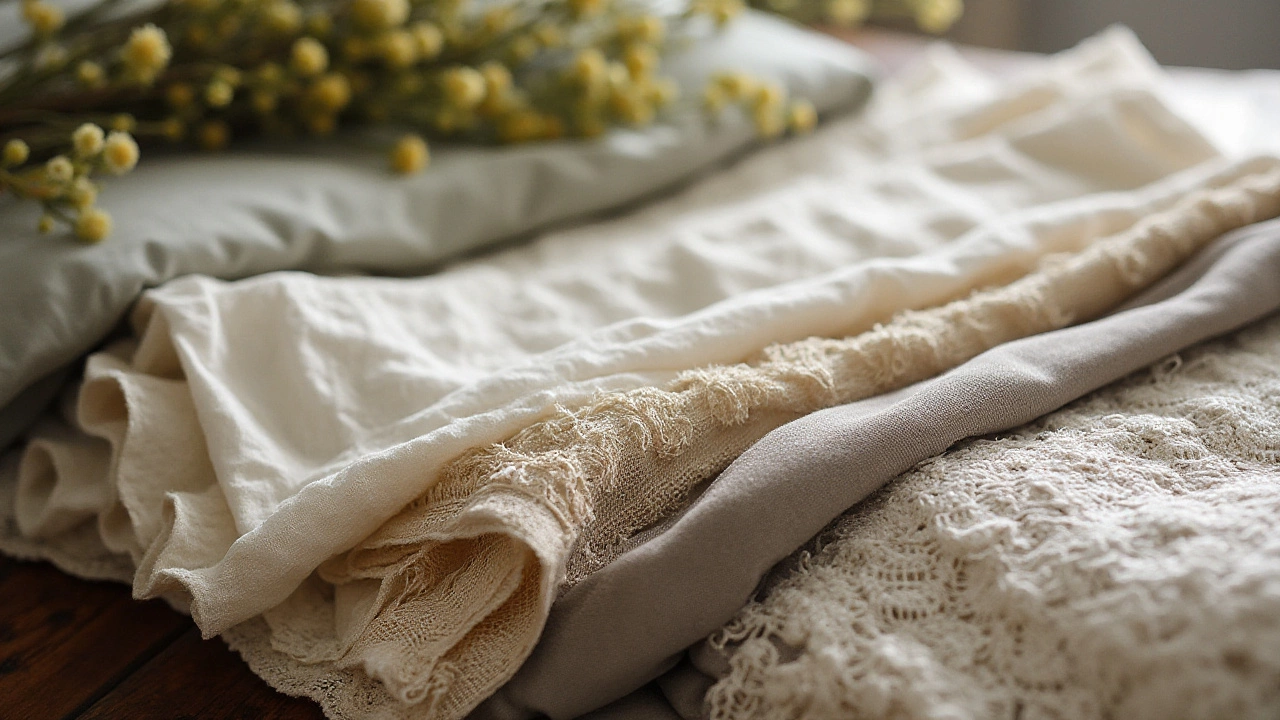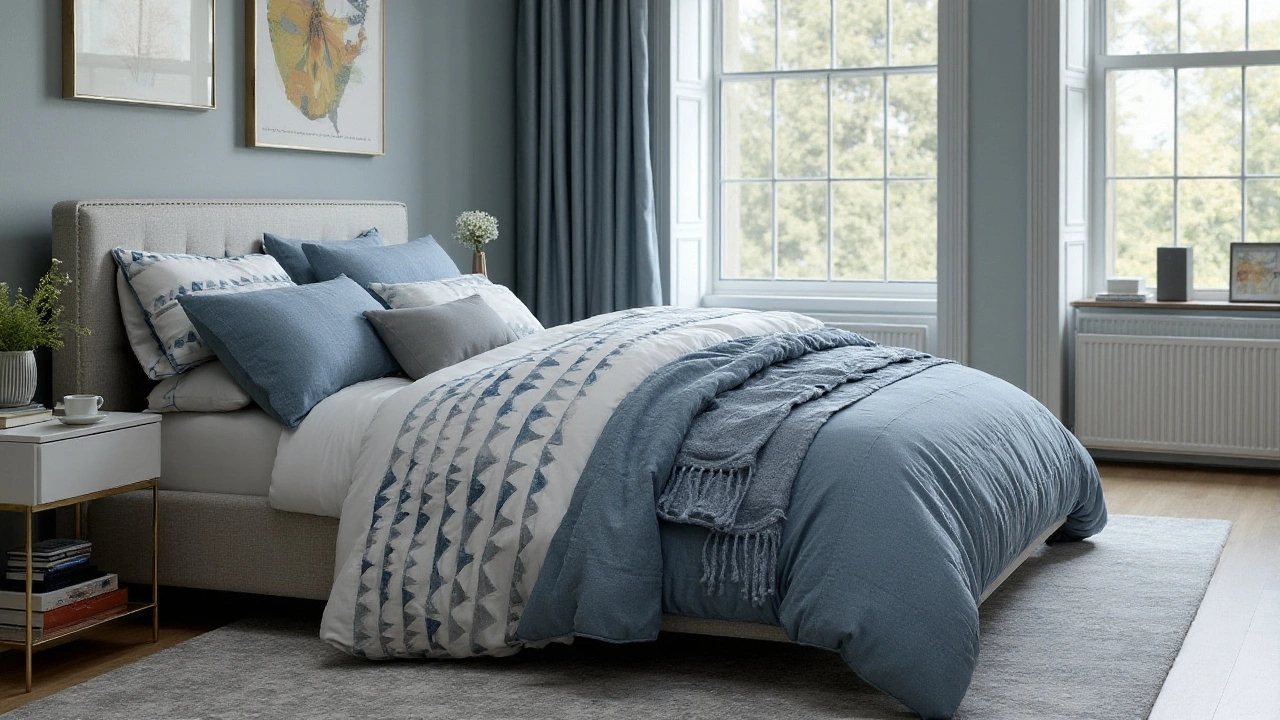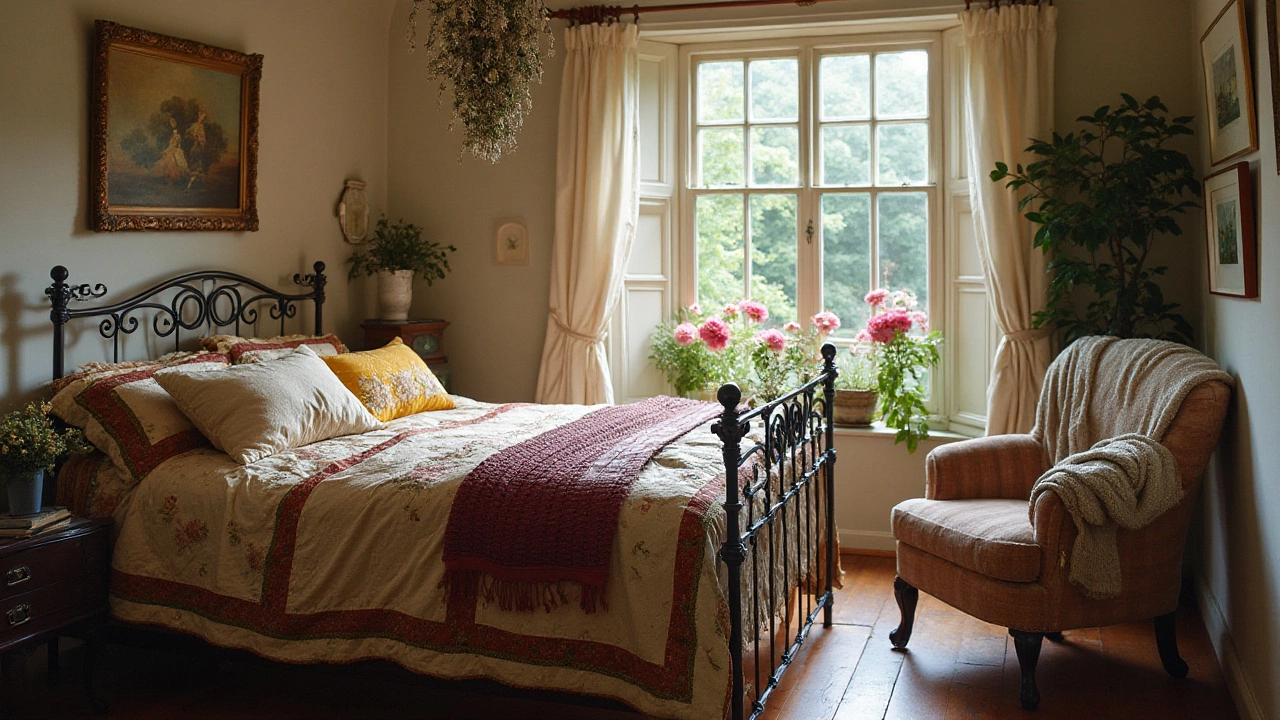Understanding the Significance of Beddings: A Guide to Comfort and Style
 Jan, 20 2025
Jan, 20 2025
When we step into our bedrooms, the bed often commands center stage, enveloped in crisp sheets and cozy blankets. It's more than just a place to rest; it's a culmination of comfort and personal style. But what exactly do beddings entail, and why do they matter so much in our day-to-day lives?
Delving into the world of beddings opens up a kaleidoscope of options and considerations, from materials like Egyptian cotton to modern synthetics that promise durability and flair. With this guide, let's embark on a journey to uncover the meaning and importance of beddings, exploring their past, present, and future. Whether seeking sanctuary in soft linens or making bold decorative statements, we'll explore how to make informed choices that reflect both comfort and style in your bedroom haven.
- The Evolution of Beddings: A Brief History
- Types of Bedding and Their Functions
- Tips for Choosing the Right Beddings
- Trends in Bedding Design and Materials
The Evolution of Beddings: A Brief History
Once upon a time, long before the concept of modern beddings took shape, people relied on nature's offerings to create comfortable sleeping environments. Ancient civilizations like the Egyptians and Mesopotamians laid the groundwork for what we know today by developing early forms of beddings. They used grass, straw, and reeds to cushion their sleep. With the advent of the loom, linen became a coveted material, marking a significant leap toward comfort. By the time of the Roman Empire, bedding was recognized as a status symbol, often draped in luxurious silks and vibrant colors to denote wealth and prestige in households.
As centuries passed, European nations surged ahead in bedding innovations, especially during the Renaissance. This era saw the introduction of bed frames adorned with intricately carved wood and lavish canopies, designed to impress as much as to provide rest. It wasn't just about aesthetics; practical considerations like warmth led to the development of feather-filled mattresses and blankets, precursors to the cozy duvets we cherish today. The Industrial Revolution further catalyzed this evolution, bringing mass production into play and enabling textiles like cotton to become widely accessible, thereby democratizing comfort across social classes.
The Modern Bed: From Function to Fashion
Fast forward to the 19th and 20th centuries, and the evolution of beddings took an interesting turn. Materials diversified and processes refined, leading to the mass availability of synthetic fibers and blends. This was a period where comfort and hygiene coalesced, as innovations in washing techniques allowed for regular cleaning of bed linings, thus enhancing sleep quality and prolonging the life of bedding products. The onset of these developments marked bedding's transition from mere functionality to a cornerstone of stylish bedroom decor.
“Your bed is the most important furniture piece in your home; treat it with respect" — Fashion Icon Coco Chanel
In contemporary times, beddings have emerged not only as functional must-haves but as individual expressions of style and comfort. Designers experiment with patterns and textures, while technological advances introduce temperature-regulating sheets and hypoallergenic fills. Sustainability is now an imperative, as demands for eco-friendly materials rise, reshaping how modern bedding essentials are conceived and produced. From ethical sourcing to minimalist designs leading market trends, beddings continue to adapt, always striving to weave a tapestry of comfort, style, and consciousness.

Types of Bedding and Their Functions
The world of beddings is vast and varied, yet each type plays a critical role in both comfort and design. Whether you are snuggling under a duvet as the winter wind howls outside, or draping a lightweight quilt over yourself in the sultry summer, the right bedding can make all the difference. Let's take a closer look at the myriad types of bedding available and the unique functions they serve. One of the essential components is sheets, comprising both the fitted sheet, which wraps snugly around your mattress, and the flat sheet, which lies between you and your blanket. The primary function of sheets is to provide a soft, clean surface that is gentle on the skin, improving the quality of your sleep. Materials range from traditional cotton, prized for its breathability, to more luxurious options like silk.
Quilts and coverlets are popular too for their cross-functional design. While they can be used as the main layer in warmer months, they are often layered with other blankets during colder seasons. Quilts are typically crafted from cotton or linen and have a distinct, stitched pattern that adds a touch of elegance and warmth to your bedroom decor. In addition, blankets and comforters, often confused with each other, hold important distinctions. A comforter is typically thicker, filled with materials like down or down alternatives to provide warmth. Meanwhile, blankets range from lightweight weaves to dense weaves, all designed for those who relish a minimalist approach. Adding a new dimension to our sleeping environments, duvet covers offer not just a protective layer for duvets and comforters but also a chance to switch up style without breaking the bank. Often available in a range of colors and textiles, duvet covers can revitalize a space instantly.
Pillowcases are the unsung heroes, protecting pillows while slipping effortlessly into decorative pillow shams for that extra touch of flair. Beyond aesthetic appeal, quality pillowcases ensure hygiene by resisting dust mites and allergens, a boon for those who suffer from nighttime allergies. Bed skirts, or valances, might seem like mere frills, but their role extends beyond visual appeal. Used effectively, they can hide storage underneath the bed and contribute to a polished, unified look in your bedroom. Reminiscent of a timeless tradition, bedspreads date back centuries and traditionally cover the entire bed down to the floor, offering a classic, neatly made bed appearance. These often come in a single layer, making them perfect for the warmer months or homes with thorough insulation.
Embracing innovative bedding additions, mattress toppers, while not visible, elevate comfort by adding an extra layer of padding on top of the existing mattress. From memory foam options to featherbed toppers, they adjust the bed’s firmness and can extend the life of the mattress, proof of their key functional role. Lastly, decorative pillows and throws shouldn't be underestimated. They add color, texture, and personality to your bed. Switching out decorative pieces seasonally can freshen up the space without the need for a comprehensive bedding overhaul. According to a recent survey, 67% of homeowners reported that regularly updating their bedroom decor, especially with unique bedding elements, improved their mood and sleep quality.

Tips for Choosing the Right Beddings
The realm of beddings can be vast and sometimes overwhelming, but choosing the right pieces can transform your sleep experience and your bedroom's aesthetic. First, consider the fabric. Cotton, particularly Egyptian and Pima, is renowned for its breathability and softness, making it a popular choice for those who prioritize comfort. Linen, with its rustic appeal, offers a unique texture; it's ideal for keeping cool in summer but can also provide warmth during colder months. For those with sensitivities, hypoallergenic options, such as bamboo or organic cotton, can be a godsend. A well-informed decision often begins with a simple touch test in the store—don’t hesitate to feel the fabric against your skin to gauge its texture.
Thread count is another important consideration, but it can be misleading. While many believe higher counts equal better quality, this isn't always true. Manufacturers sometimes inflate numbers, weaving thin threads together to artificially boost the count without enhancing durability or comfort. Aim for a thread count between 200-400 for a delightful blend of softness and resilience. Also, think about seasonal needs. During hotter times, lighter materials can help regulate body temperature, while heavier fabrics like flannel are perfect for winter coziness. As the celebrated designer William Morris once said,
"Have nothing in your houses that you do not know to be useful, or believe to be beautiful."Such wisdom underscores the balance between utility and elegance when selecting bedding.
Color and pattern should also play into your choices. Do you prefer a calm and serene haven, or a vibrant and energizing space? Neutral shades offer timeless elegance and versatility, pairing effortlessly with various decor. On the other hand, bold prints or brighter colors can inject personality and dynamism into your bedroom. It's like choosing paint for a canvas—each piece of bedding contributes to the larger artwork of your living space. Additionally, budget considerations should not be ignored. Although quality often comes with a higher price, savvy shoppers can find reasonably priced options during sales or in outlets offering discontinued lines. Remember, investing in good beddings is investing in your quality of rest and, by extension, your well-being.
| Material | Thread Count | Best For |
|---|---|---|
| Cotton | 200-400 | All seasons |
| Linen | 80-120 | Summer |
| Flannel | 150-200 | Winter |
| Bamboo | 300-500 | Allergy-prone individuals |

Trends in Bedding Design and Materials
In today's world, beddings have transcended the mere function of comfort and warmth to become vibrant expressions of personal style and aesthetic. This evolution has introduced a host of new designs and materials to the market, reflecting not only current fashion trends but also advancements in textile technology. One of the prevailing trends we see is a shift towards sustainability, with many producers opting for eco-friendly options such as organic cotton, bamboo fibers, and recycled materials. This shift comes as consumers become more conscious about their environmental impact, demanding beddings that align with their ethical values without sacrificing quality or comfort.
Another significant trend in the world of bedroom decor is the resurgence of vintage and eclectic designs. This brings back the charm of bygone eras, marrying them with contemporary twists to create unique and visually appealing aesthetics. The bohemian style, for example, is making waves with its layers of textures and patterns that invite coziness and creativity into bedroom spaces. Simultaneously, minimalist designs continue to hold their ground, characterized by clean lines, neutral palettes, and the serenity they evoke. The minimalist trend appeals to those who prefer a clutter-free, calming environment where the focus is on quality over quantity.
"The bedroom, more than any other room in the house, is a sanctuary that should reflect the deepest essence of your style and comfort needs." - Elle Decor
In addition to design, the science of comfort in bedding essentials has made incredible strides. Innovation in fabric technology is providing solutions such as temperature regulation, antimicrobial properties, and hypoallergenic materials. These advancements cater to the diverse needs of individuals, particularly those with allergies or specific health considerations. Alongside this, aesthetic enhancements such as embossed textures and digital printing techniques allow a wider array of patterns and motifs, enhancing the tactile and visual experience of beddings.
To embrace these trends, consider integrating a mix of timeless pieces with modern accents. Opt for sheets and duvet covers that balance function with flair—perhaps a set in a soft, organic cotton paired with a boldly patterned throw or cushion. When selecting bedding sets, explore brands that commit to ethical production processes, ensuring that your choices not only benefit your home but also support sustainable practices and fair trade. With these considerations, the bed becomes a style statement as much as a place of rest.